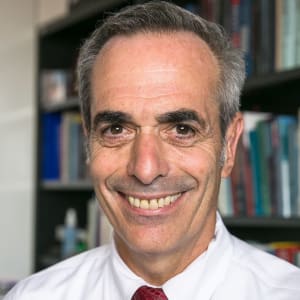
Elliot V Hersh

Henry Daniell
 Elliot V Hersh |  Henry Daniell |
Elliot V Hersh1, Mark Wolff2, Paul A Moore3, Katherine N Theken1, Henry Daniell4
1Oral Surgery and Pharmacology, University of Pennsylvania, School of Dental Medicine; 2Dean/Preventive and Restorative Sciences, University of Pennsylvania, School of Dental Medicine; 3Dental Public Health/Dental Anesthesia, University of Pittsburg, School of Dental Medicine; 4Basic and Translational Sciences, University of Pennsylvania, School of Dental Medicine
Introduction
The emergence of the COVID-19 viral pandemic has generated a renewed interest in pharmacologic agents that target the renin angiotensin system (RAS). Angiotensin-converting enzyme 1 (ACE1) and angiotensin converting enzyme 2 (ACE2) are two potential targets in the treatments of cardiovascular disease and SARS-CoV-2.
Methods
This literature review explored the physiologic and pathologic roles of ACE1 and ACE2 and identified therapeutic approaches to manipulate these two enzymes in the treatment of cardiovascular disease and SARS-CoV-2.
Results
ACE1 inhibitors decrease the synthesis of angiotensin II (Ang II) from its precursor angiotensin I and inhibit the breakdown of bradykinin, while Ang II receptor blockers antagonize the action of Ang II at the receptor level downstream. The actions of both classes of drugs lead to vasodilation, a blunting of sympathetic drive and a reduction in aldosterone release, all beneficial effects in hypertension and congestive heart failure. ACE2 cleaves the vasoconstrictor Ang II to produce the vasodilatory, anti-inflammatory and cytoprotective angiotensin 1–7 (Ang 1–7) peptide, which functions through the G protein–coupled receptor MAS to counteract the pathophysiologic effects induced by Ang II via its receptors, including vasoconstriction, inflammation, hypercoagulation, and fibrosis. SARS-CoV-2 enters human cells by binding ACE2 on the cell surface, decreases ACE2 activity, competes for ACE2 receptor-binding sites, and shifts the RAS toward an overexpression of Ang II, accounting for many of the deleterious effects of the virus. Thus, there is great interest in developing recombinant ACE2 as a therapeutic for prevention and treatment of COVID-19. Notably, ACE2 is highly expressed in the oral cavity, and saliva and dorsum of the tongue are major reservoirs of SARS-CoV-2. Cost effective methods to debulk the virus in the oral cavity employing plant-based technology may aid in the prevention of viral spread and treatment of the disease.
Conclusion
Dentists learned about drugs that block ACE1 or the Ang II receptor in their predoctoral pharmacology courses, and targeting the RAS in cardiovascular disease continues to expand. ACE2 is counterregulatory to ACE1 and is the receptor by which SARS-CoV-2 enters cells.